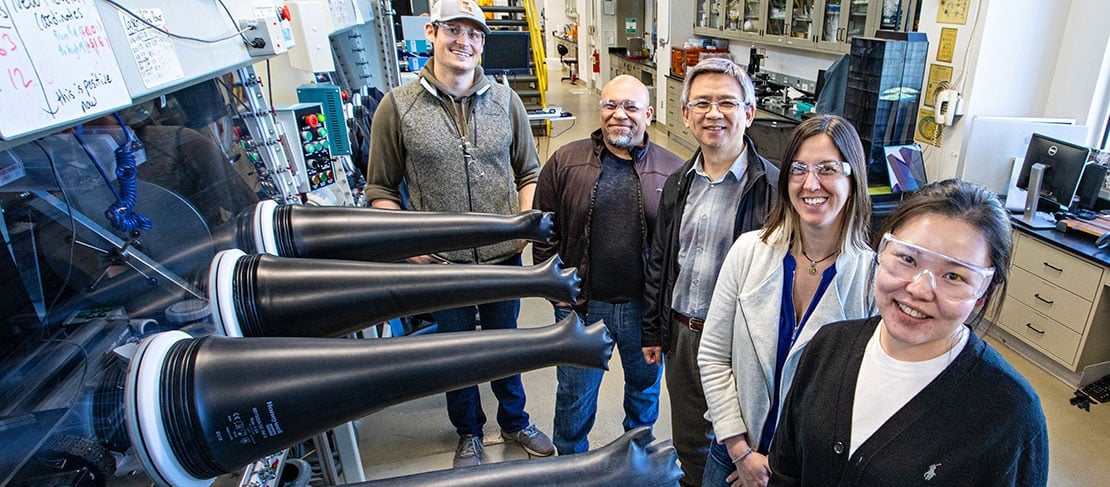
NLR's research in chemistry and nanoscience accelerates the pace of innovation for next-generation energy materials and applications.
We pursue the discovery, co-design, development, and manufacturing of energy materials—including performance, reliability, and integration into advanced energy systems. And we work closely with industry partners to ensure our research will deliver abundant and reliable energy.
Our primary research in chemistry and nanoscience includes:
Electrical Energy Storage
Hydrogen and Fuel Cells
Fuel cells, and hydrogen production and storage
Photovoltaics
Solar Photochemistry
Manufacturing for Energy Applications
Roll-to-roll manufacturing and atmospheric processing
Quantum and Carbon Nanomaterials
Carbon nanoscience, layered semiconductors, and thermoelectric materials
Our staff contributes across these technology program and science areas:
Molecular and Catalysis Science
Studying and developing novel and efficient conversion of energy in sunlight into chemical energy and light-generated electricity
Spectroscopy and Photoscience
Developing spectroscopic tools to improve our understanding of physical phenomena in energy transformation processes and accelerate the innovation and adoption of energy conversion systems and devices
Electrochemical Engineering and Materials Chemistry
Providing a knowledge base in materials science covering fundamental issues that impact photovoltaics, electrochromic windows, high-temperature superconductors, hydrogen storage, and solid-state batteries
High-Efficiency Crystalline Photovoltaics
Developing low-cost, manufacturable techniques to further increase the efficiency of advanced silicon cells; continuing to develop the highest-efficiency III-V multijunction cells for space and high-concentration terrestrial applications; and pursuing low-cost III-V photovoltaic cells for 1-sun and low-concentration terrestrial applications and very high-efficiency silicon-based tandem cells
Cell and Module Performance
Performing a span of performance measurements across a range of cell and module technologies—including commercial, developmental, and research samples—for scientists in the photovoltaic industry and at universities
Jao van de Lagemaat is the director of the Chemistry and Nanoscience Center, which is part of the Materials, Chemical, and Computational Science directorate, led by Associate Laboratory Director Bill Tumas.
Share
Last Updated Dec. 4, 2025
